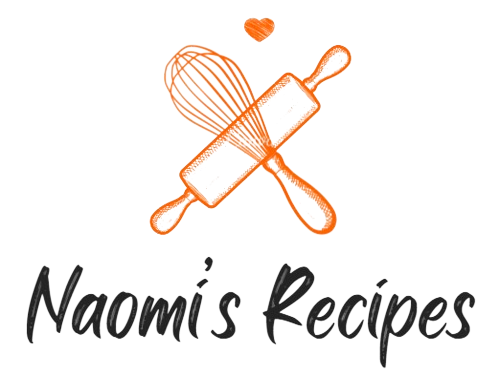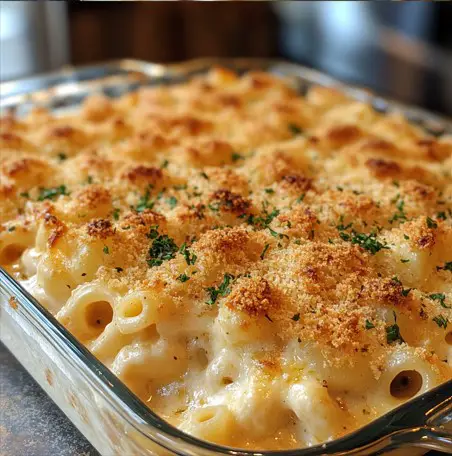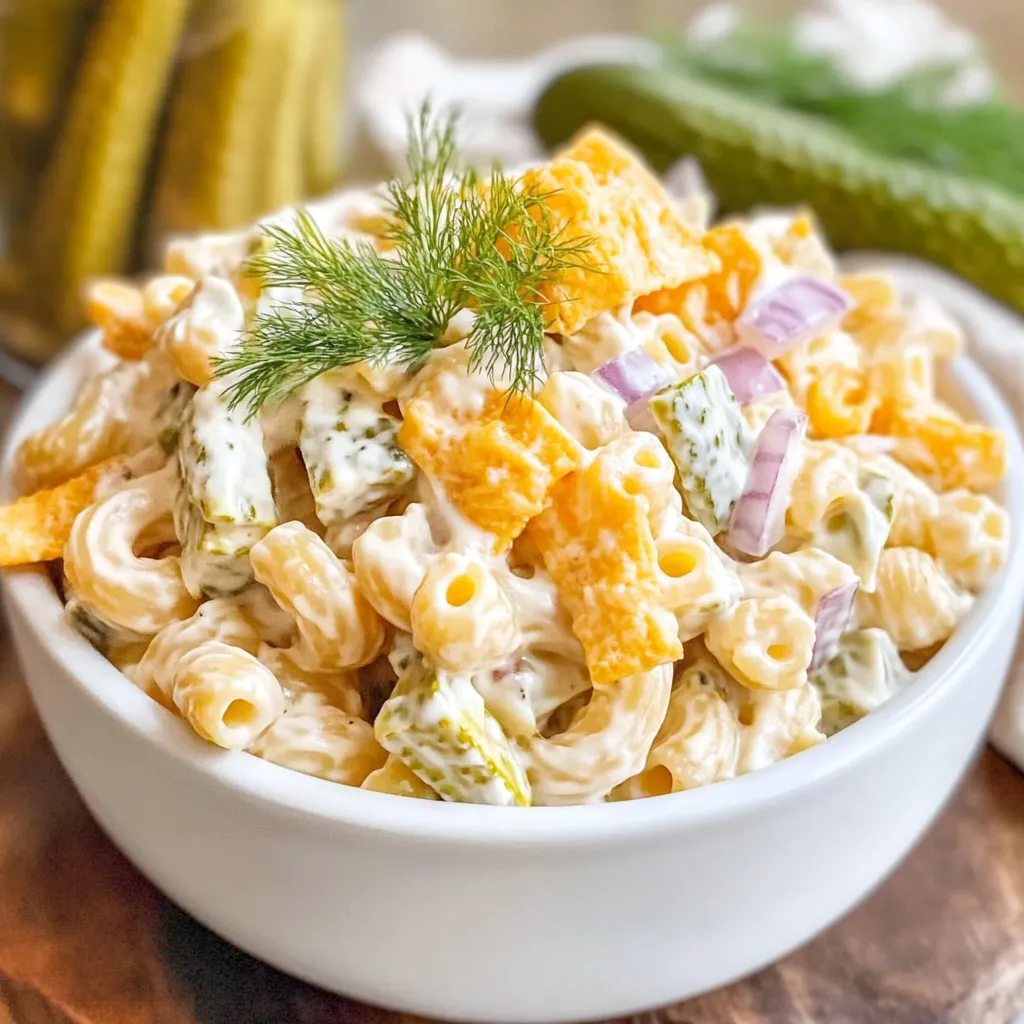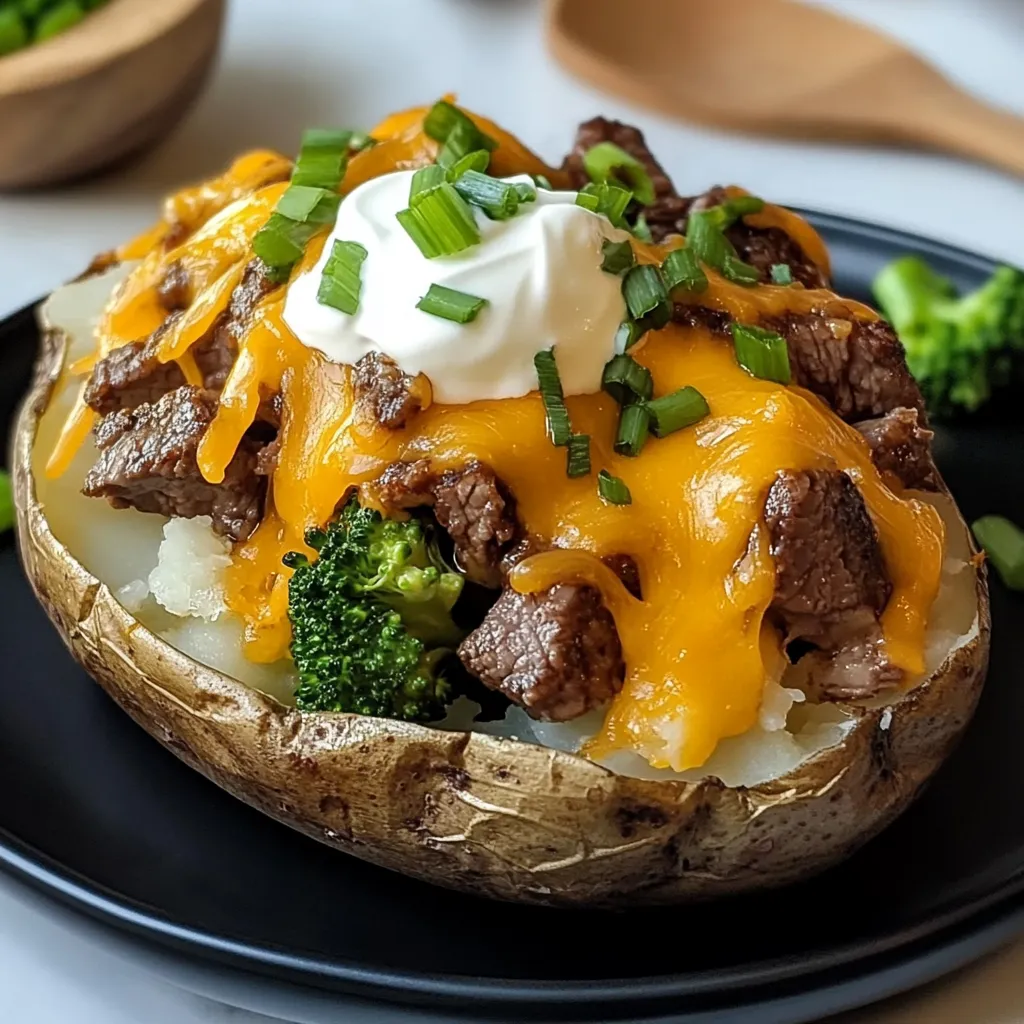Macaroni and cheese, a dish beloved across generations, traces its roots back to Europe, where it first appeared in the 14th century. This comforting combination of pasta and cheese has evolved over centuries, becoming a staple in American cuisine. Initially considered a dish of the elite due to the high cost of cheese and pasta, it gained widespread popularity in the United States during the 19th century, especially after being introduced by Thomas Jefferson, who brought the recipe back from France. Its affordability and ease of preparation eventually made it a household favorite.
The cafeteria-style macaroni and cheese emerged in the mid-20th century, particularly in school and workplace cafeterias, where it was appreciated for its creamy texture and cheesy flavor. Unlike the gourmet or stovetop versions, cafeteria-style macaroni and cheese is characterized by its simplicity and homely appeal. It’s baked to perfection, with a rich, gooey cheese sauce enveloping every piece of macaroni, topped with a crunchy breadcrumb crust.
This recipe embodies the essence of nostalgia, evoking memories of childhood lunches and comfort. Its appeal lies in the use of simple, readily available ingredients, making it accessible to everyone. The combination of tangy mustard, savory Worcestershire sauce, and sharp Cheddar cheese creates a flavor profile that is both familiar and deeply satisfying. Whether served as a main dish or a side, cafeteria-style macaroni and cheese remains a timeless comfort food that continues to bring warmth and joy to the table.
Why This Recipe Works
This cafeteria-style macaroni and cheese recipe stands out for several reasons, making it a go-to comfort food that’s both easy to prepare and incredibly satisfying. The first key element is its ingredient simplicity. With just a handful of pantry staples—macaroni, milk, mustard, Worcestershire sauce, Cheddar cheese, and a few seasonings—this recipe is both accessible and economical. Unlike more complex versions, there’s no need for exotic cheeses or specialty ingredients, making it a perfect choice for a quick, comforting meal.
Another factor contributing to this recipe’s success is the texture. The combination of a creamy, cheesy sauce and a crunchy breadcrumb topping creates a delightful contrast that enhances every bite. The macaroni is cooked to al dente, ensuring it holds its shape and texture even after being baked. The cheese sauce, made with a mix of melted Cheddar and a touch of butter, clings to the pasta, offering a rich, velvety mouthfeel. Topping the dish with buttery breadcrumbs and a sprinkle of paprika before baking adds a satisfying crunch that complements the smoothness of the sauce.
The flavor profile is also a standout feature. The inclusion of ground mustard and Worcestershire sauce introduces a depth of flavor that sets this recipe apart from more basic versions. The mustard adds a subtle tang, while the Worcestershire sauce brings a savory umami note, making the dish more complex and interesting.
When compared to other types of macaroni and cheese, such as gourmet versions loaded with multiple types of cheese or stovetop recipes that focus on quick preparation, this cafeteria-style version strikes a perfect balance. It’s richer and more flavorful than many stovetop recipes, yet simpler and more nostalgic than gourmet variations. This combination of simplicity, texture, and flavor makes this recipe a classic that appeals to both the young and the old.
Ingredient Breakdown
Each ingredient in this cafeteria-style macaroni and cheese plays a crucial role in creating the dish’s signature taste and texture, making it a beloved comfort food.
- Macaroni: The classic choice for this dish, elbow macaroni is the ideal pasta shape due to its ability to hold the creamy cheese sauce in its curved tubes. This shape ensures that every bite is packed with flavor, providing the perfect balance of pasta and sauce. The small size of macaroni also allows it to cook quickly and evenly, making it a practical choice for both home cooks and large-scale cafeteria preparation.
- Milk: Whole milk is the preferred liquid base for the cheese sauce because of its rich, creamy consistency. The higher fat content in whole milk contributes to the smoothness of the sauce, helping to emulsify the cheese and create a cohesive mixture that coats the pasta beautifully. Using whole milk also enhances the overall richness of the dish, giving it a satisfying, indulgent texture.
- Ground Mustard: This ingredient adds a subtle tanginess that brightens the overall flavor of the dish. Ground mustard helps to cut through the richness of the cheese, preventing the sauce from becoming overly heavy. It also pairs well with the Worcestershire sauce, adding a layer of complexity to the flavor profile.
- Worcestershire Sauce: A small amount of Worcestershire sauce brings a savory, umami depth to the macaroni and cheese. Its blend of vinegar, molasses, and anchovies adds a slightly tangy, sweet, and salty note that enhances the other flavors without overpowering the dish. This ingredient is key to elevating the taste from a simple cheese sauce to something more nuanced and interesting.
- Cheddar Cheese: The star of the show, sharp Cheddar cheese is chosen for its excellent melting properties and bold flavor. Cheddar provides the perfect balance of creaminess and tang, creating a rich, flavorful sauce that clings to the macaroni. Using a combination of mild and sharp Cheddar can further enhance the flavor, offering a blend of creamy texture and intense cheese taste.
- Bread Crumbs and Butter Topping: The combination of bread crumbs and melted butter forms a crunchy topping that contrasts beautifully with the creamy pasta beneath. The butter helps the crumbs brown evenly in the oven, creating a golden, crispy crust that adds texture and visual appeal to the dish. This topping is essential for providing that satisfying crunch that many people associate with classic baked macaroni and cheese.
- Paprika: Sprinkling paprika over the top of the dish before baking adds a subtle smoky flavor and a pop of color. While its flavor is mild, paprika enhances the visual appeal of the dish by giving the breadcrumb topping a warm, reddish hue. It also complements the other spices, contributing to the overall depth of flavor.
Together, these ingredients create a harmonious balance of creamy, cheesy goodness with a touch of tang, a hint of smokiness, and a satisfying crunch. This combination is what makes cafeteria-style macaroni and cheese a timeless favorite.
Step-by-Step Cooking Guide
Creating the perfect cafeteria-style macaroni and cheese requires careful attention to each step in the process. Here’s a detailed guide to help you achieve the ideal dish every time.
1. Boiling the Macaroni
- Step 1: Bring a large pot of lightly salted water to a rolling boil. Use about 4 quarts of water for 8 ounces of macaroni to ensure the pasta cooks evenly and doesn’t stick together.
- Step 2: Add the macaroni and cook it until just al dente, typically 8 to 10 minutes. Tip: Al dente means the pasta should be firm to the bite, not mushy. This is crucial because the pasta will continue to cook in the oven, and you don’t want it to become too soft or lose its texture.
- Step 3: Drain the macaroni and set it aside. Do not rinse the pasta, as this removes the starch that helps the sauce adhere better to the macaroni.
2. Preparing the Cheese Sauce
- Step 1: In a small saucepan, gently heat 1½ cups of whole milk over medium-low heat until warm, but not boiling. Tip: Warming the milk helps it blend more smoothly with the other ingredients, preventing lumps.
- Step 2: Stir in 1½ teaspoons of ground mustard, 1 teaspoon of Worcestershire sauce, ¾ teaspoon of salt, and a dash of hot pepper sauce. Tip: These ingredients add depth to the sauce, balancing the richness of the cheese.
- Step 3: In the pot with the drained macaroni, stir in 1½ tablespoons of butter and 3 cups of shredded sharp Cheddar cheese. Slowly pour the warm milk mixture over the pasta and cheese, stirring continuously until the cheese is fully melted and the sauce is smooth. Tip: The key to achieving the perfect consistency is to mix the sauce gently and evenly, ensuring that the cheese melts completely without becoming oily or grainy.
3. Layering and Baking
- Step 1: Preheat your oven to 350°F (175°C) and grease a 2-quart casserole dish. Tip: Greasing the dish prevents the macaroni from sticking and makes for easier serving.
- Step 2: Transfer the macaroni and cheese mixture into the prepared casserole dish, spreading it out evenly.
- Step 3: Sprinkle the remaining ½ cup of shredded Cheddar cheese evenly over the top. In a small bowl, combine ½ cup of bread crumbs with 2 tablespoons of melted butter. Sprinkle this mixture over the cheese layer, ensuring even coverage. Tip: This topping adds a crunchy texture that contrasts beautifully with the creamy macaroni.
4. Broiling for the Crust
- Step 1: Bake the dish in the preheated oven for 30 minutes, until the cheese is bubbly and the bread crumbs are golden brown.
- Step 2: For an extra-crispy crust, place the dish under the broiler for 1 to 2 minutes. Tip: Keep a close eye on the dish while broiling, as the bread crumbs can quickly burn. Broiling gives the topping a perfect, crunchy finish.
Common Mistakes to Avoid
When making cafeteria-style macaroni and cheese, a few common mistakes can detract from the dish’s quality. Here’s how to avoid them:
1. Overcooking the Pasta
- Problem: Overcooked macaroni becomes mushy and loses its shape, leading to an unappealing texture.
- Solution: To prevent this, cook the macaroni just until it’s al dente, meaning it should be firm to the bite. Remember that the pasta will continue to cook in the oven, so undercooking it slightly during the boiling stage is ideal. Start checking the pasta a minute or two before the recommended cooking time on the package.
2. Cheese Sauce Issues
- Problem: A grainy or oily cheese sauce can ruin the creamy consistency that makes macaroni and cheese so delicious.
- Solution: To avoid a grainy sauce, ensure the milk is gently warmed before adding it to the cheese. This helps the cheese melt smoothly. Avoid using pre-shredded cheese, which often contains anti-caking agents that can cause a grainy texture. For a non-oily sauce, maintain a low to medium heat when combining the ingredients, and stir continuously to prevent the cheese from separating.
3. Burning the Topping
- Problem: The breadcrumb topping can easily burn when using the broiler, resulting in a bitter flavor and unappealing appearance.
- Solution: When broiling, keep a close eye on the dish, checking every 20-30 seconds. Position the casserole dish on a middle rack rather than directly under the broiler, which gives you more control and reduces the risk of burning. Broil just until the topping turns golden brown and crisp.
4. Substituting Ingredients
- Problem: Using non-dairy milk or alternative cheeses can drastically alter the flavor and texture of the dish.
- Solution: If substituting ingredients, choose ones that closely mimic the originals. For non-dairy milk, opt for unsweetened almond or oat milk, but be aware that the sauce may be thinner and less rich. When selecting alternative cheeses, use ones known for good melting properties, like vegan Cheddar, but keep in mind that these may not provide the same depth of flavor.
Variations and Additions
Cafeteria-style macaroni and cheese is a versatile dish that can be customized to suit a wide range of tastes and dietary preferences. Here are some popular variations and additions that can elevate the classic recipe.
1. Cheese Variations
- Mixing Cheeses for Flavor: While sharp Cheddar is the traditional choice, combining different cheeses can add complexity and richness to the dish. For a creamier sauce, try adding a soft cheese like cream cheese or Brie. Gruyère or Swiss can introduce a nutty flavor, while a bit of Parmesan or Pecorino Romano can add a sharp, salty edge. A mix of cheeses not only enhances the flavor but also improves the texture of the sauce, making it smoother and more luxurious.
2. Meat Add-ins
- Incorporating Ham, Bacon, or Chicken: Adding meat to your macaroni and cheese can turn it into a hearty main course. Diced ham or crumbled bacon brings a smoky, savory flavor that complements the cheese. For a lighter option, shredded cooked chicken works well, adding protein without overwhelming the dish. Be sure to cook and season the meat before mixing it into the macaroni and cheese to ensure it’s flavorful and well-integrated.
3. Vegetarian Options
- Adding Vegetables like Broccoli or Spinach: Vegetables can enhance both the nutrition and flavor of your macaroni and cheese. Steamed broccoli florets add a mild, slightly sweet taste and a pop of color. Fresh spinach, stirred into the hot sauce, wilts quickly and adds a subtle earthy flavor. Other great additions include sautéed mushrooms, roasted bell peppers, or even caramelized onions. These vegetables not only provide additional nutrients but also make the dish more visually appealing.
4. Spice It Up
- Using Different Spices or Adding More Hot Sauce: To give your macaroni and cheese a kick, consider adding spices like smoked paprika, cayenne pepper, or even a pinch of chili powder. For those who love heat, increasing the amount of hot pepper sauce or incorporating sliced jalapeños can add a bold, spicy element. Herbs like thyme or rosemary can also be added for a fragrant twist. Experimenting with spices allows you to customize the dish to your preferred level of heat and flavor complexity.
Serving Suggestions
Cafeteria-style macaroni and cheese is a hearty and satisfying dish that pairs well with a variety of sides and beverages, making it perfect for a complete meal.
1. Side Dishes
- Simple Salad: A fresh, crisp salad is an ideal complement to the richness of macaroni and cheese. A basic green salad with mixed greens, cherry tomatoes, cucumbers, and a light vinaigrette adds a refreshing contrast. Alternatively, a tangy coleslaw can offer a crunchy texture and a bit of acidity to balance the creamy pasta.
- Roasted Vegetables: Roasted vegetables like Brussels sprouts, carrots, or asparagus provide a warm, earthy flavor that pairs well with the cheesy macaroni. The caramelization from roasting brings out the natural sweetness of the vegetables, adding depth to the meal.
2. Beverage Pairings
- Lemonade or Iced Tea: These classic beverages offer a refreshing counterpoint to the richness of the dish. The tartness of lemonade cuts through the creaminess, while iced tea provides a smooth, cooling effect. For a more sophisticated pairing, consider a lightly oaked Chardonnay or a crisp apple cider.
3. Presentation Tips
- Individual Portions: For a more elegant presentation, serve the macaroni and cheese in individual ramekins. This not only looks appealing but also ensures that everyone gets a perfect portion with an even amount of crispy topping.
- Family-Style: Serving the dish family-style in a large casserole dish allows everyone to help themselves, creating a relaxed, communal atmosphere. For added appeal, garnish with a sprinkle of fresh herbs like parsley or chives before bringing it to the table.
Nutritional Information and Health Considerations
Cafeteria-style macaroni and cheese is a rich, indulgent dish, and understanding its nutritional profile can help you enjoy it in a balanced way.
1. Caloric Content
- A typical serving of this macaroni and cheese (about 1 cup) contains approximately 300-400 calories, depending on the specific ingredients used. This makes it a moderately high-calorie dish, particularly when enjoyed as a main course.
2. Fat and Protein Breakdown
- Fat Content: The dish is relatively high in fat, with around 15-20 grams of fat per serving, mainly from the cheese and butter. Most of this is saturated fat, which should be consumed in moderation as part of a balanced diet.
- Protein Content: On the positive side, macaroni and cheese provides a good amount of protein, typically 12-15 grams per serving. The protein comes primarily from the cheese and milk, making it a satisfying and filling dish.
3. Possible Substitutes for Healthier Options
- To reduce the fat and calorie content, consider using low-fat or reduced-fat cheese and milk. These substitutes can significantly lower the dish’s overall fat content while still providing a creamy texture.
- Whole Wheat Pasta: Replacing regular macaroni with whole wheat pasta adds fiber and nutrients, making the dish more filling and beneficial for digestion.
- Vegetable Add-ins: Incorporating vegetables like spinach or broccoli can increase the nutritional value, adding vitamins and minerals while reducing the overall calorie density.
4. Allergen Information
- Dairy: This dish contains significant amounts of dairy, which may be problematic for those with lactose intolerance or dairy allergies. To make a dairy-free version, use plant-based milk and cheese alternatives, such as almond milk and vegan cheese.
- Gluten: Traditional macaroni contains gluten, which can be an issue for those with celiac disease or gluten sensitivity. Gluten-free pasta made from rice, corn, or quinoa is a good alternative that can be used without compromising the dish’s integrity.
FAQs
1. How can I make this dish ahead of time?
- You can prepare the macaroni and cheese up to the point of baking, then cover it tightly with plastic wrap or foil and refrigerate for up to 24 hours. When you’re ready to bake, remove it from the refrigerator and let it sit at room temperature for about 30 minutes, then bake as directed. You may need to add an extra 5-10 minutes to the baking time if the dish is cold.
2. Can I freeze macaroni and cheese?
- Yes, macaroni and cheese freezes well. To freeze, prepare the dish but do not bake it. Let it cool completely, then cover it tightly with aluminum foil or transfer it to an airtight container. It can be frozen for up to 3 months. To bake, thaw it in the refrigerator overnight, then bake as directed, adding a few extra minutes to ensure it’s heated through.
3. What’s the best way to reheat leftovers?
- Reheat leftovers in the oven at 350°F (175°C) for about 20 minutes, or until heated through. To prevent the dish from drying out, cover it with foil while reheating. Alternatively, you can reheat individual portions in the microwave on medium power, adding a splash of milk to maintain creaminess.
4. Can I make this dish gluten-free?
- Absolutely! Substitute regular macaroni with gluten-free pasta made from rice, corn, or quinoa. Ensure that the bread crumbs used for the topping are also gluten-free, or replace them with crushed gluten-free crackers.
5. How can I make this macaroni and cheese creamier?
- For an extra creamy texture, increase the amount of cheese and milk in the recipe. You can also stir in a bit of cream cheese or a splash of heavy cream when making the sauce. Another option is to use a blend of cheeses, such as adding some Monterey Jack or Gruyère, which melt smoothly and contribute to a creamier consistency.
Conclusion
Cafeteria-style macaroni and cheese is a timeless comfort food that’s incredibly easy to make and universally loved. With its simple ingredients and straightforward preparation, this recipe offers a deliciously creamy and cheesy dish that can be ready in no time. The balance of flavors, from the tangy mustard to the savory Worcestershire sauce, combined with a satisfying crunchy topping, makes it a go-to meal for any occasion.
Whether you’re cooking for a family dinner or preparing a dish for a gathering, this macaroni and cheese is sure to please everyone at the table. Its versatility also allows for endless customization, from adding different cheeses to incorporating vegetables or meats, letting you tailor it to your taste preferences.
I encourage you to try this classic recipe and explore the many variations you can create. With each batch, you’ll discover new ways to enjoy this comforting favorite, making it a regular in your meal rotation.
Print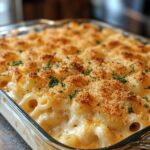
Cafeteria Macaroni and Cheese
Description
This cafeteria-style macaroni and cheese is the epitome of comfort food, offering a creamy, cheesy sauce that clings to tender macaroni, all topped with a crunchy, buttery breadcrumb crust. Simple yet satisfying, this dish evokes nostalgia with every bite, reminiscent of the classic mac and cheese served in school cafeterias. It’s perfect as a main course or a side dish, and its straightforward preparation makes it an excellent choice for both weeknight dinners and special occasions.
Ingredients
- 8 ounces macaroni
- 1 ½ cups milk
- 1 ½ teaspoons ground mustard
- 1 teaspoon Worcestershire sauce
- ¾ teaspoon salt
- 1 dash hot pepper sauce
- 1 ½ tablespoons butter
- 3 ½ cups shredded Cheddar cheese, divided
- ½ cup bread crumbs
- 2 tablespoons butter, melted
- ½ teaspoon paprika
Instructions
- Preheat oven to 350°F (175°C). Grease a 2-quart casserole dish.
- Bring a large pot of lightly salted water to a boil. Add macaroni and cook for 8 to 10 minutes or until al dente; drain.
- In a small saucepan, heat the milk over medium-low heat. Stir in mustard, Worcestershire sauce, salt, and hot sauce. Set aside.
- Stir 1½ tablespoons butter and 3 cups of cheese into the drained macaroni. Pour the hot milk mixture over the cheese and macaroni, stirring until well combined.
- Transfer the mixture to the prepared baking dish. Sprinkle the remaining ½ cup Cheddar on top.
- In a small bowl, combine the bread crumbs with the melted butter, and spread over the top. Sprinkle with paprika.
- Bake in the preheated oven for 30 minutes. For an extra-crispy topping, broil for 1 to 2 minutes, watching closely to prevent burning.
Notes
For best results, cook the macaroni just until al dente, as it will continue to cook while baking. You can make the dish ahead of time by assembling it up to the point of baking, then refrigerating it until ready to bake. If you’re looking for a healthier version, consider using whole wheat pasta, low-fat cheese, and milk. Additionally, feel free to customize the recipe by adding meats like bacon or ham, or incorporating vegetables such as broccoli or spinach for added nutrition and flavor.
